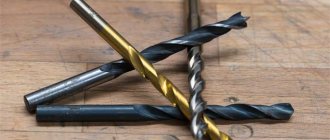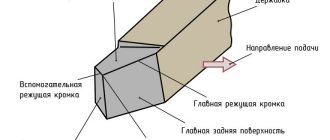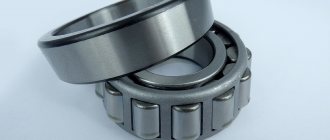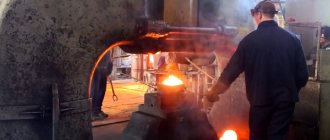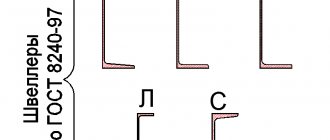The best manufacturers
When purchasing drills, it is important to pay attention to the manufacturer. In this case, the price justifies the quality, and the more famous the brand, the better the sharpening of the drill, the metal alloy, wear resistance and resistance to excessive heat. If you buy a non-disposable drill, do not skimp on the tool. For one-time work, cheap options are suitable.
For convenience, we have combined the characteristics of the main manufacturers into a table:
| Trademark | Characteristics | Approximate cost (depending on the type, length of the drill and the number of pieces in the package) |
| USSR | Reliable brand with high quality metal. | from 15 to 10,000 rub. |
| Ruko | Good quality and reasonable price. The most popular is the TL 3000 line - drills with cross sharpening and titanium coating. | from 30 to 1,000 rub. |
| Bosch | The drills from this company are considered the best. | from 70 to 7,000 rub. |
| Haisser | Powerful drills used in industry and everyday life are characterized by a titanium alloy, a sharpening angle of 135 degrees, and mesh grinding. | from 150 to 5,000 rub. |
| Bison | Drills made in Russia. Advantages: reasonable price and quality. Professionals recommend the Cobalt series, which has good accuracy and compliance with GOST 10902-77. | from 35 to 700 rub. |
In stores you will find drills of different sizes and formats, different in hardness and colors, divided by sharpening angle, with different shanks and from a variety of manufacturers. In order not to make a mistake when choosing a drill, decide what you need it for now and whether you will need it in the future. If you follow these principles, buying a drill won't be a problem.
How to choose a drill
Everyone knows why a drill is needed - to drill holes. Many people know that drills are available for metal, wood and concrete. Some will be able to distinguish a Forstner drill from a feather drill.
But progress does not stand still, and today there are dozens of types of drills on store shelves, differing both in design and material of manufacture, and in the features of application.
And, of course, they also differ in prices.
A single metal drill can cost either 10 or 500 rubles, and at first glance there will be no difference between them.
But the first one will get stuck in aluminum, overheat and become dull when drilling thick iron, and it simply won’t be able to drill stainless steel.
In order not to throw money away when buying drills, you should clearly determine what material you need to drill and what characteristics of drills you should pay attention to when processing this material.
Classification of drills by type of design
When working with metal parts, two main groups of drilling devices can be distinguished:
- Flat (or feather) drills - such a tool has replaceable plates for the feather drill, is undemanding to the accuracy of the angle of application of force during drilling work, is structurally simple and has a low cost, but at the same time easily loses the diameter of the working surface when sharpening and does not have a groove structurally to remove chips.
- Twist drills are cylindrical drills that have one or two grooves on the surface of their body to remove chips.
When working with metal, it is important to select a drilling device that matches the material. In order for the work to be done efficiently, the craftsman must be able to distinguish drills for metal from similar drills for wood. The drill configuration for both materials has similar elements; in both cases, the tools can have a diameter of up to 80 mm and a length of up to 600 mm, the drilling technology is identical and, moreover, the drills have the same markings. But despite all the similarities, wood tools are not always suitable for metal drilling, and vice versa.
The first distinguishing feature is the hardness of the gimlet: for drilling holes in metal, a tool with a higher hardness is selected. You need to understand that the hardness of metal drills is not a constant parameter and, in turn, also depends on the strength characteristics of the material on which drilling work will be carried out.
The second difference is the type of sharpening of the cutting elements. The device for drilling wood has a sharp nose at the tip in the form of a pin or corner, which prevents the gimlet from sliding relative to its specified position. Such fixation is not required when working with metal. The angle between the cutting edges is also different and directly depends on the material for which the drill is intended.
When carrying out drilling work on wooden parts and the master decides to use a tool designed for metal work, you need to understand that the distinctive characteristics listed above can play a key role in obtaining a high-quality hole with smooth edges and without scorching.
An important role in obtaining a high-quality hole is played by the factor of whether the drill manufacturing technology was followed correctly. If something was broken during the production of a metal drilling tool, then neither the correct shape of the gimlet nor its appropriate color will be able to ensure a high-quality result of the work and the service life of the drilling product will be significantly reduced.
Marking and color of metal drills
Probably, each of us has thought about what drills are made of, what does the marking stamped on the tool mean? How do you drill something like yourself using metal? This is because the product is made from high-quality and high-strength steel, and not from raw material, which penetrates the market from dishonest manufacturers.
Types of drills depending on material
To determine the best drills for metal, you need to find out what material the chosen drill was made of and get acquainted with what types of drills there are depending on this.
For drilling high-strength alloys, carbide products that have a surface of increased hardness on their cutting edge are suitable. Typically, the body of such gimlets is made of simple tool steel, which ensures a low price for the finished drilling product. Plates made of carbide alloy undergo self-sharpening during their use, as a result of which such gimlets cope with particularly durable materials, incl. having greater thickness.
Cobalt drills respond well to high mechanical loads and are not subject to changes in their properties under the influence of high temperatures. These drills are based on high-speed steel alloyed with cobalt, as a result of which they do an excellent job of drilling holes in high-strength materials and metal products with high toughness. The price characteristic also favors this category of metal drills.
Titanium drills have the best drilling performance. Subject to the rules of operation of such drills, titanium products will delight their owner with excellent work results for a very long time.
How do HSS drills differ from carbide models?
First of all, HSS drills differ from carbide drills in their material manufacturing technology.
- High-speed steel is produced by adding tungsten, chromium, molybdenum and other components to carbon steel. The material of HSS drills is highly durable.
- Carbide is a composite material made using powder metallurgy technology. It consists of micron-sized particles. The main component is tungsten carbide. Additional ones include titanium carbide, tantalum carbide, etc.
Carbide tools from HSS drills are characterized by higher hardness and heat resistance. However, hard alloys have lower strength. They are afraid of vibrations and force loads. This does not allow the use of carbide drills for intermittent machining of workpieces at high speeds.
Due to the complex manufacturing technology, carbide tools are expensive. Prices for drills made of high-speed steel are much lower.
Drill 19.0x198 mm c/x according to met. machined under ?13 HSS-R RUKO art. 200190 RUR 2,203
Add to cart
Drill 19.5x198 mm c/x according to met. machined under ?13 HSS-R RUKO art. 200195 RUR 2,415
Add to cart
Drill 20.0x205 mm c/x according to met. machined under ?13 HSS-R RUKO art. 200200 RUR 2,556
Add to cart
Drill 22.0x205 mm c/x according to met. machined under ?13 HSS-R RUKO art. 200220 RUR 3,772
Add to cart
Drill 24.0x205 mm c/x according to met. machined under ?13 HSS-R RUKO art. 200240 RUR 4,864
Add to cart
Drill 25.0x205 mm c/x according to met. machined under ?13 HSS-R RUKO art. 200250 RUB 5,200
Add to cart
Determining the type of drill by the color of its surface
The color of a drilling tool is an important feature that allows us to draw appropriate conclusions about its quality and durability. Different types of gimlet colors have different strength characteristics, the choice of which should be based on the frequency of use of the tool, its accuracy and the requirements for the quality of the finished hole.
Gray drills are short-lived and the least reliable due to the complete absence of any protective coating, which makes them susceptible to changes in mechanical properties for the worse under the influence of high temperature or force loads. Such drills have a low cost, but their use will be one-time.
Black metal drills, compared to gray ones, are of better quality. The manufacturing technology of black gimlets involves treatment with high-temperature steam, which increases their strength and resistance to wear. Drilling products with a black surface also have a low cost, which attracts the attention of many craftsmen.
Drills with a light yellow coating have a very good safety margin. Internal stresses in such products are eliminated by thermal tempering even at the stage of their manufacture, due to which high strength of the tool is created. For their manufacture, they resort to the use of high-quality high-speed tool steel. Despite all their advantages, pale gold drills are inferior in their characteristics to brighter specimens.
The bright yellow drill bits are made of high-strength steel coated with titanium nitride. Products with a similar color when making holes experience minimal frictional force, which has a positive effect on their service life. The cost of such gimlets is quite high, but they fully pay for themselves due to their long service life.
What does the drill marking mean?
What does the marking on the drill mean? The marking of a metal drill has an alphanumeric designation: first comes the letter of the main element, followed by a number indicating its percentage in the material from which the drill is made. Other elements may also be indicated after the first two characters. The letter P stands for tungsten, K for cobalt, F for vanadium, M for molybdenum. Chromium is usually not indicated in the labeling, since it is always present in the source material (about 4%). Carbon is also not specified. For example, the marking of a drill R7M6K6 indicates that it is made of high-speed steel with a mass fraction of tungsten content of 7%, molybdenum - 6%, cobalt - 6%.
Domestic manufacturers do not put any information on drills for metal with a diameter of less than 2 mm. The diameter and steel grade are applied to a tool with a diameter of 2–3 mm. For all other drills, in addition to the information mentioned, the trademark is stamped, and in rare cases, the accuracy class of the drill.
If holes are drilled in metal for threads, a drill of a certain diameter is selected for each. For threads M4, M5, M6, M8, M10, M12, the diameter of the drills is respectively 3.3; 4.2; 5.0; 6.7; 8.4; 10.2 mm. Large holes in metal must be made in several stages, that is, first you should use a thin drill, then increase the diameter to the desired size. For example, in order to drill a hole with a diameter of 10 mm, it is better to drill it in two steps with 5 and 10 mm drills.
What are the best metal drills? How to choose, review of manufacturers
Metal drilling is a technological process aimed at producing holes of various diameters in metal sheets and workpieces using a special rotating tool called a drill.
What types of drills are there?
For the manufacture of drills, hard materials that do not collapse under mechanical influence are used, most often these are high-speed alloy alloys. Depending on the type and thickness of the material, the diameter of the hole and the technological requirements for the processing method, metal drills can be:
- spiral;
- conical;
- ring;
- centering;
- feathers.
Each type of tool has its own advantages and disadvantages, which significantly affect the ability to perform certain jobs; read in detail about all these types here.
Key indicators for selection
When choosing a tool for drilling metals, you must consider:
- the composition of the alloy from which they were made;
- method of additional processing and the presence of surface coating;
- manufacturer's trademark;
- diameter and design shape;
- design and sharpening angles of cutting edges.
Important! The cutting part of traditional twist drills has a front and rear angle of inclination of the plane of the cutting part. The geometric parameters of the rear sharpening angle determine the magnitude of the friction force during operation and the wear rate of the tool. Increasing this indicator allows you to process stronger metals, but leads to reduced heat dissipation and faster wear.
What can color say?
An important external parameter when choosing a drill can be the color of the surface, which indicates the composition of the alloy, the processing method and the surface reinforcing coating. High-quality tools are made from high-speed alloys with the addition of titanium, molybdenum or tungsten. The international designation for such metals is HSS (High Speed Steel).
However, even if the drill marking contains a similar inscription, but its surface is gray steel in color, you should not buy such a product. It has not been subjected to additional types of processing and does not have sufficient strength and wear resistance. The price in this case will be low, but it will also last a short time, with the need for frequent sharpening.
Drills can be:
- Black , after heat treatment with superheated steam and additional hardening. The cost of a black drill is slightly higher than that of untreated products, but it is quite affordable for use for domestic purposes. But increased strength significantly increases service life.
- After heating the finished drills in a furnace and gradually tempering the metal to relieve internal stresses, the surface acquires a light yellow tint . As a result, the wear resistance of the drill increases significantly, and its sharpening is required much less frequently.
- The bright golden color indicates the use of an alloy with the addition of titanium, which is characterized by maximum strength. These are the most expensive drills, but their use is fully justified by their long service life.
- Gray color indicates low quality of the instrument. Used for one-time work, after which it is thrown away. Accordingly, this drill is the cheapest on the market.
When determining which drill will be best for your conditions, approach the issue from a practical point of view.
For constant drilling work, it is better to buy an expensive, but more wear-resistant tool. But for periodic use and solving everyday problems, black or pale yellow drills are quite suitable.
This will allow you to get the desired result at the minimum acceptable cost.
How drills are made and why they are different colors, video from the RUKO plant (Germany)
Marking of drills for metal, what you need to consider when choosing
The alphanumeric designations printed on the drill contain information about:
- diameter and length of the tool;
- the brand of metal from which it is made;
- method of additional processing and the presence of surface coating;
- manufacturing accuracy class.
At the same time, diameters up to 3.0 mm are not marked, and all the necessary information is given on the packaging.
The area of application can be indicated by the following symbols:
- HSS-G for drilling mild steel, cast iron and non-ferrous metals;
- HSS-E for high alloy and stainless alloys;
- HSS-TiAIN is a universal tool for all types of materials.
The presence of such markings indicates the possibility of professional use of the tool.
You can read more about labeling here.



